Peoria, Illinois, Hgh State Clinic, Hgh Injections, Hrt Doctors
Peoria, Illinois Blood Testing Facilities
 Represents a LabCorp blood testing facility
Represents a LabCorp blood testing facility Represents a Quest Diagnostics blood testing facility
Represents a Quest Diagnostics blood testing facility

Nearby Labcorp Blood Testing facilities:
- Labcorp Center Distance: 6 m, 2419 W. Cornerstone Ct Ste B, Peoria, Peoria County, IL, 61614
- Labcorp Center Distance: 36 m, 1703 Clearwater Ave, Bloomington, McLean County, IL, 61704
- Labcorp Center Distance: 77 m, 3400 Dexter Ct Ste 205, Davenport, Scott County, IA, 52807
- Labcorp Center Distance: 78 m, 5359 Eastern Ave, Davenport, Scott County, IA, 52807
- Labcorp Center Distance: 92 m, 2104 Cedarwood Dr Ste 202, Muscatine, Muscatine County, IA, 52761
- Labcorp Center Distance: 95 m, 2025 S. Chicago Street, Joliet, Will County, IL, 60436
Nearby Quest Blood Testing facilities:
- Quest Center Distance: 36 m, 503 N Prospect Rd, Bloomington, McLean County, IL, 61704-7723
- Quest Center Distance: 64 m, 3119 Robbins Rd, Springfield, Sangamon County, IL, 62704-6553
- Quest Center Distance: 65 m, 2905 N Main St, Decatur, Macon County, IL, 62526-4275
- Quest Center Distance: 77 m, 3524 Jersey Ridge Rd, Davenport, Scott County, IA, 52807-2223
- Quest Center Distance: 82 m, 2107 S Neil St, Champaign, Champaign County, IL, 61820-2061
- Quest Center Distance: 88 m, 1100 W Veterans Pkwy, Yorkville, Kendall County, IL, 60560-4728
- Quest Center Distance: 95 m, 310 N Hammes Ave, Joliet, Will County, IL, 60435-5676
- Quest Center Distance: 97 m, 24600 W 127Th St, Plainfield, Will County, IL, 60585-9507
- Quest Center Distance: 98 m, 3244 Sycamore Rd, Dekalb, Dekalb County, IL, 60115-4941
- Quest Center Distance: 99 m, 2088 Ogden Ave, Aurora, Kane County, IL, 60504-4376
Hormone Replacement Therapy Services for the State of Illinois
Are you over the age of thirty and feel that symptoms related to premature aging are bringing you down? You may actually be suffering from a condition known as hormone imbalance. Two of the most common forms of Hormone Imbalance which are associated with the aging process are Testosterone Deficiency and Human Growth Hormone Deficiency.
The Conscious Evolution Institute provides Pharmaceutical Hormone Replacement Therapy Solutions for men and women all across the United States.
HGH Deficiency Treatments in Chicago and Greater Illinois
Do you find yourself dragging as you grow older? Are you experiencing weight gain and loss of muscle mass even though you haven't changed your lifestyle? Are you experiencing psychological issues, not associated with your life circumstances, such as depression or a loss of well-being?
You may be suffering from Human Growth Hormone Deficiency, also known as Somatopause. Human beings are sensitive to hormonal changes, and as we get older, our brains secrete less and less of this vital hormone. With regular Bio-Identical HGH Shots, it is possible to negate the effects of Somatopause, potentially improving your physiological health, improving your outlook as well as reducing your mortality risk.
Sermorelin Acetate HGH Deficiency Treatment
HGH Injections aren't the only way to restore Growth Hormone Levels, however. The Conscious Evolution Institute also offers Recombinant Sermorelin Therapy, which boosts natural HGH Production by safely stimulating the pituitary gland. We can help you decide which form of treatment is best for you.
Low-T Treatments in Chicago and Greater Illinois
Testosterone Deficiency is also a major medical disorder which has the capacity to significantly disrupt the lives of both men and women. Like HGH, Testosterone production starts to fade around the time that we reach our mid-twenties. Many men don't experience issues for years or decades, but other men are much more sensitive to these hormonal changes.
Low-T is also referred to as Andropause, because it has a tendency to become symptomatic around the same period as Menopause, and can have the same powerful impact on health and wellness. If you are experiencing severe fatigue, loss of muscle mass, anxiety, or weight gain in combination with a lack of libido or loss of sexual ability, there is a major chance that you are suffering from Low-T and can benefit from the various Bio-Identical Low-T solutions that we provide.
HCG Weight Management Treatments in Chicago and Greater Illinois
Not all hormone treatments are intended specifically to correct hormone imbalance. HCG Injections are a form of Bio-Identical Hormone Replacement Therapy which has been proven as an effective medical treatment for obesity.
For men and women that have spent years struggling with their weight, HCG has the ability to break the cycle of dieting and binging which causes so many diets to fail. HCG, when combined with low calorie diet, leads to rapid weight loss, while significantly reducing the feelings of hunger and loss of energy associated with such a diet. HCG helps break free energy trapped in your adipose fat tissue, helping you maintain a healthy metabolism even with a significant reduction in caloric consumption.
Largest Cities in Illinois
Chicago
Chicago, is the largest city in Illinois, and is one of the largest cities in the United States. The only cities in America larger than Chicago are Los Angeles and New York City. Chicago is frequently referred to by its nickname: The Windy City. It's location adjacent to Lake Michigan causes it to experience high levels of snow and wind.
Chicago is also referred to as the Second City, because of its significant size and cultural importance, historically only considered second to New York City. Because Chicago is such a large city, it has a number of sports teams. Chicago is home to the MLB teams the Chicago Cubs and White Sox. It is also home to the NFL Chicago Bears and the NBA Chicago Bulls.
Aurora
Aurora is the second largest city in Illinois, as well as the largest suburb of Chicago. Historically, Aurora was known as The City of Lights, because it was among the first places in America to have street lights controlled completely by electricity.
A unique thing about Aurora is that it has a high concentration of buildings with renowned architecture, with buildings designed by architectural mavens such as Bruce Goff and Frank Lloyd Wright. Like many cities in the Midwest, Aurora has long been known for its significant contribution to national manufacturing.
Rockford
Rockford, Illinois is the third largest city in the state of Illinois, and the largest city outside of the Metro Chicago area. Rockford is often mentioned by the nickname, The Forest City, because of the many large elm trees located throughout the city. It was also one of the first cities in the United States with organized baseball, hosting a team called the Rockford Forest City.
Rockford has experienced issues in recent years because of the decline of the manufacturing sector in the Midwest, but has entered a new era of revitalization in recent years. Today, the largest private sector business in the city is Belvedere Assembly Plant for Chrysler and the largest Public Sector employer is the Rockford school system.
Joliet
Joliet, Illinois is the fourth largest city in Illinois, and is the second largest suburb of Chicago. Joliet is located southwest of Chicago, and is growing faster than any other city in the state. Joliet is often referred to as The City of Champions because of the massive success of the bands of the Joliet Township public school system.
Joliet, like many other cities in the Rust Belt, experienced a significant loss of jobs as manufacturing declined in the area, but its proximity to Chicago has caused it to bounce back in a big way as a suburb for men and women that commute to Chicago. Joliet also has an active entertainment district in its city center, with the minor league team the Joliet Slammers and Harrah's Joliet Casino.
Naperville
Naperville, Illinois is the 5th largest city in the state of Illinois, as well as the third largest suburb of Chicago. Naperville also has the unique distinction of being considered the richest city in the Midwest as well as one of the best cities to live in and raise a family in America.
Naperville belongs to an area known as the Illinois Tech and Research Corridor, and has a large number of high tech jobs, the most significant of which being Alcatel-Lucent and Nicor. Although high tech is the largest industry in the city, the largest single employer is Edward Hospital.
All About Peoria, Illinois Geographic Area
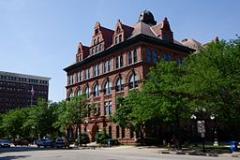
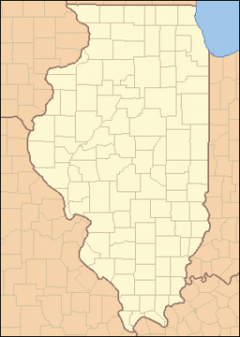
Peoria (/piËaËnÉeÉoriÉo/) is the largest city on the Illinois River and the county seat of Peoria County, Illinois, in the United States. Established in 1691 by the French explorer Henri de Tonti, Peoria is the oldest European settlement in Illinois, and is named after the Peoria tribe. As of the 2010 census, the city was the seventh-most populated in Illinois, with a population of 115,007. The Peoria Metropolitan Statistical Area had a population of 373,590 in 2011, making it the third largest metropolitan area in the state after the Chicago metropolitan area, and the Metro-East portion of the St. Louis metropolitan area.
Peoria has become famous as a representation of the average American city because of its demographics and its perceived mainstream Midwestern culture. On the Vaudeville circuit, it was said that if an act would succeed in Peoria, it would work anywhere. The question "Will it play in Peoria?" has now become a metaphor for whether something appeals to the American mainstream public. Peoria is the home of Ray LaHood, now serving as Secretary of Transportation in President Obama's cabinet. It is also headquarters for Caterpillar Inc., one of the 30 companies composing the Dow Jones Industrial Average.
Peoria is one of the oldest settlements in Illinois, as explorers first ventured up the Illinois River from the Mississippi. The lands that eventually would become Peoria were first settled in 1680, when French explorers Rene-Robert Cavelier, Sieur de La Salle and Henri de Tonti constructed Fort Crevecoeur. This fort would later burn to the ground, and in 1813 Fort Clark, Illinois was built. When the County of Peoria was organized in 1825, Fort Clark was officially named Peoria.
Peoria comes from the Native word "pim-e-ti-we", meaning "fat lake".
Peoria was incorporated as a village on March 11, 1835. The city did not have a mayor, though they had a village president, Rudolphus Rouse, who served from 1835 to 1836. The first Chief of Police, John B Lishk, was appointed in 1837. The city was incorporated on April 21, 1845. This was the end of a village president and the start of the mayoral system, with the first mayor being William Hale.
Peoria, Arizona, a suburb of Phoenix, was named after Peoria, Illinois because the two men that founded it in 1890 ae Joseph B. Greenhut and Deloss S. Brown ae wished to name it after their hometown.
The first American automobile, the Duryea, was reportedly produced in downtown Peoria.
In 1926, Charles Lindbergh flew mail into Peoria as a stop on his mail route between St. Louis and Chicago.
Peoria is located at 40 °43 a²15 a³N 89 °36 a²34 a³W / 40.72083 °N 89.60944 °W / 40.72083; -89.60944 (40.720737, -89.609421).
According to the 2010 census, the city has a total area of 50.23 square miles (130.1 km2), of which 48.01 square miles (124.3 km2) (or 95.58%) is land and 2.22 square miles (5.7 km2) (or 4.42%) is water.
Peoria is bounded on the east by the Illinois River except for the enclave of Peoria Heights, which also borders the river. Four bridges run directly between the city and neighboring East Peoria. On the south end of Peoria's western border are Bartonville and the newly established city of West Peoria. Local municipal plans indicate that the city intends to continue its expansion northwest, into an area unofficially considered part of Dunlap, Illinois.
Peoria has a humid continental climate (Koppen Dfa), with cold, snowy winters, and hot, humid summers. Monthly daily mean temperatures range from 22.5 °F ( na5.3 °C) to 75.2 °F (24.0 °C). Snowfall is common in the winter, averaging 26.3 inches (67 cm), but this figure varies considerably for different years. Precipitation, averaging at 36 inches (914 mm), peaks in the spring and summer, and is the least in winter. Extremes have ranged from na27 °F ( na33 °C) in January 1884 to 113 °F (45 °C) in July 1936.

Peoria's downtown area includes corporate, governmental, convention, educational, and medical facilities. It is also home to the Peoria Civic Center, Theatres, and O'Brien Field, as well as an arts, dining, and entertainment area near the riverfront. The downtown area now also includes high-rise residential developments such as condominiums, apartments, and riverfront lofts. Some of these were office buildings and warehouses converted to residential use.
The city of Peoria is home to a United States courthouse, the Peoria Civic Center (which includes Carver Arena), and the world headquarters for Caterpillar Inc.. Medicine has become a major part of Peoria's economy. In addition to three major hospitals, the USDA's National Center for Agricultural Utilization Research, formerly called the USDA Northern Regional Research Lab, is located in Peoria. This is the lab where mass production of penicillin was developed.
Grandview Drive, which Theodore Roosevelt purportedly called the "world's most beautiful drive" during a 1910 visit, runs through Peoria and Peoria Heights. In addition to Grandview Drive, the Peoria Park District boasts 9,000 acres (36 km2) of parks, including the Peoria Zoo and five public golf courses. There are also several private and semi-private golf courses. The Peoria Park District, the first and still largest park district in Illinois, was the 2001 Winner of the National Gold Medal Award for Excellence in Parks and Recreation for Class II Parks.
Museums in Peoria include the Pettengill-Morron House and the John C Flanagan House of the Peoria Historical Society, Lakeview Museum for the Arts and Sciences and the Wheels o' Time Museum. A new Museum Square, to be opened on October 12, 2012, will house a new regional museum, a planetarium, and the Caterpillar World Visitors Center.[dead link]
The Steamboat Classic, held every summer, is the world's largest four-mile (6 km) running race and draws international runners.
Peoria's sister cities include Friedrichshafen, Germany; Benxi, China; and Clonmel, Ireland.
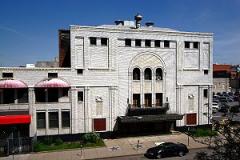
The Peoria Symphony Orchestra is the 10th oldest in the nation. Peoria is also home to the Peoria Municipal Band, the Peoria Area Civic Chorale, the Central Illinois Youth Symphony, and the Peoria Ballet. Several community and professional theaters have their home in and around Peoria, including the Peoria Players, which is the fourth-oldest community theater in the nation and the oldest in Illinois. Corn Stock Theatre is another community theater company in Peoria, it being the only outdoor theater in the round in Central Illinois.
The Contemporary Art Center of Peoria, and the Peoria Art Guild and Galleries, host of the Annual Art Fair that was rated as one of the 100 top art fairs in the nation, are in Peoria.
Peoria has significantly expanded and refurbished the Peoria Zoo, formerly Glen Oak Zoo, at Glen Oak Park. Finished in 2009, the new zoo improvements more than triple the size of the zoo and feature a major African safari exhibit. Work had begun in the fall of 2006. In addition, The Peoria Playhouse ae An Interactive Children's Museum, spearheaded by the Junior League of Peoria ae is planned in conjunction with the zoo expansion and further enhancements to Glen Oak Park campus.
Peoria has hosted the Heart of Illinois Fair every year since 1949. The fair features livestock competitions, rides, concessions, motor contests, and concerts.
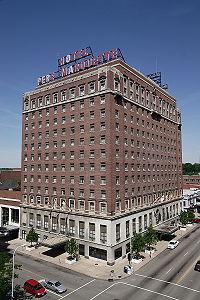
Peoria is home to professional hockey. The Peoria Rivermen play in the AHL. The current hockey team is the third team to use the name Peoria Rivermen, and they started play in October, 2005 at the Peoria Civic Center. and are affiliated with the St. Louis Blues of the National Hockey League.
The Class A Minor League Baseball team Peoria Chiefs home venue is O'Brien Field, a stadium near downtown Peoria. This team is affiliated with the St. Louis Cardinals and plays in the Midwest League.
The Peoria Sunday Morning League is the longest running semi-pro baseball league in the nation. It has been running for 91 years. The league boasts many former major leaguers such as Kirby Puckett.
Peoria is home of the newly established Midwest Flames (American Basketball Association).
Peoria was also home to the Arena Football League 2 (af2) professional football team, the Peoria Pirates, until mid-2009, when the team was folded, unable to find new buyers.
In 1946, the Peoria Redwings were created as part of the All-American Girls Baseball League (which was officially the American Girls Baseball League after 1950). The Redwings were the ninth team of twelve to enter the league, and were in the league for six of the twelve years of its existence. The Redwings folded after the 1951 season, and the league disbanded in 1954.
The Peoria Rugby Football Club is the Men's rugby club in Peoria Illinois, established in 1973. High school rugby in Peoria began in 2006.
Since 1974, Peoria has hosted the annual Steamboat Classic event, a running race featuring 4-mile (6.4 km) and 15K events. In 2007, the race drew over 4,000 participants.
A chapter about Peoria is included in the basketball book Big Game, Small World by Alexander Wolff.
Peoria is the hometown of several college and professional basketball players, including Shaun Livingston, A.J. Guyton, Sergio McClain, and Frankie Williams.
Peoria is the hometown of American Major League Baseball player Jim Thome, currently a first baseman/pinch hitter for the Baltimore Orioles.
Peoria is the 153rd largest radio market in the United States and Peoria-Bloomington is the 116th largest television market in the United States.
The area has 14 commercial radio stations with six owners among them; four non-commercial full-power radio stations, each separately owned; five commercial television stations with two operating owners among them; one non-commercial television station; and two daily newspapers (Peoria Journal Star and Pekin Daily Times), both with the same owner.
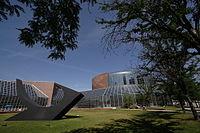
The Peoria Civic Center includes an arena, convention center, and theater, and was completed in the early 1980s, was designed by the famed late architect Philip Johnson. The three structures are connected via an enclosed glass panel arcade for all-weather protection and aesthetics. As of 2007, it has completed a $55 million renovation and expansion based on demand for larger conventions and entertainment venues.
Renovations to the older Pere Marquette is currently underways by hotel developer, Gary Matthews. Upon completion, the hotel will be a full service Marriott Hotel with skyway linking to the Peoria Civic Center. A new 12 story Courtyard hotel will be built adjacent to this hotel completing a hotel campus for larger conventions.
Renaissance Park is a research park originally established in May 2003 as the Peoria Medical and Technology District. It consists of nine residential neighborhoods, Bradley University, the medical district, Caterpillar world headquarters, and the National Center for Agricultural Utilization Research. The Peoria NEXT Innovation Center opened in August 2007 and provides both dry and wet labs, as well as conference and office space for emerging start-up companies. Over $1 billion in research is conducted in Peoria annually.[dead link]
The Block is a $100+ million project that will contain the Peoria Riverfront Museum and The Caterpillar Experience, a museum and visitor's center showcasing Caterpillar past, present, and future. It is nearing completion in downtown Peoria along the Illinois River at the site formerly known as the Sears Block. The Block is expected to open in October 2012.
Peoria's first major industry was started in 1830 by John Hamlin and John Sharp, who constructed the flour mill on Kickapoo Creek. In 1837, another industry was begun with E.F. Nowland's pork planting industry. Many other industries started slowly in Peoria including carriage factories, pottery makers, wholesale warehousing, casting foundries, glucose factories, ice harvesting, and furniture makers.
Peoria became the first world leader for distilleries thanks to Andrew Eitle (1837) and Almiron S. Cole (1844). During this time, Peoria held 22 distilleries and multiple breweries. Together, they produced the highest amount of internal revenue tax on alcohol of any single revenue district in the entire U.S. Peoria also was one of the major bootlegging areas during the prohibition and home to the famed mobsters, the Shelton brothers. This great success placed Peoria into a building boom of beautiful private homes, schools, parks, churches, as well as municipal buildings.
In addition to the distilleries, came farm machinery manufacturing by William Nurse in 1837. Also, two men called Toby and Anderson brought the steel plow circa 1843, which gained immediate success. The dominant manufacturing companies in Peoria were Kingman Plow Co., Acme Harvester Co., Selby, Starr & Co., and Avery Manufacturing Co. In 1889, Keystone Steel & Wire developed the first wire fence and has since been the nation's leading manufacturer.
Around the 1880s, businesses such as Rouse Hazard Co. in Peoria, were dealers and importers of bicycles and accessories worldwide. Charles Duryea, one of the cycle manufacturers, developed the first commercially available gasoline-powered automobile in the U.S. in 1893.
At this time, agricultural implement production declined, which led the earth moving and tractor equipment companies to skyrocket and make Peoria in this field the world leader. In 1925, Caterpillar Tractor Co. was formed from the Benjamin Holt Co. and the C.L. Best Tractor Co. Robert G. LeTourneau's earth moving company began its production of new scrapers and dozers in 1935 which evolved into Komatsu-Dresser, Haulpak Division. Today, the joint venture between Komatsu and Dresser Industries has long since passed. The entity that remains is the off-highway truck manufacturing division for Komatsu America Corporation.
As of the census of 2000, there were 112,936 people, 45,199 households, and 27,345 families residing in the city. The population density was 2,543.4 people per square mile (982.1/km ²). There were 49,125 housing units at an average density of 1,106.3 per square mile (427.2/km ²). The racial makeup of the city was 69.29% White, 24.79% African American, 0.20% Native American, 2.33% Asian, 0.04% Pacific Islander, 1.20% from other races, and 2.16% of mixed races. Hispanic or Latino of any race were 2.51% of the population. The city has a sizable, established Lebanese population with a long history in local business and government.
There were 45,199 households, out of which 29.0% had children under the age of 18 living with them, 41.6% were married couples living together, 15.5% had a female householder with no husband present, and 39.5% were non-families. Individuals made up 33.2% of all households, and 11.7% had someone living alone who was 65 years of age or older. The average household size was 2.39 and the average family size was 3.04.
In the city, the population was spread out, with 25.7% under the age of 18, 12.0% from 18 to 24, 27.2% from 25 to 44, 20.8% from 45 to 64, and 14.2% who were 65 years of age or older. The median age was 34 years. For every 100 females, there were 89.9 males. For every 100 females age 18 and over, there were 85.0 males.
The median income for a household in the city was $36,397. The per capita income for the city was $20,512. Some 18.8% of the population was below the poverty line.
Special censuses were conducted in 2004 and 2007 that noted a total increase of 8,455 in the city's population since the 2000 census, mainly in the northwest corridor making the current population 121,391. The metropolitan area has a population of 370,000, which includes Peoria, Tazewell, Woodford, Stark and Marshall counties. Suburbs and towns in this area include Bartonville, Bellevue, Creve Coeur, Dunlap, East Peoria, Germantown Hills, Groveland, Marquette Heights, Metamora, Morton, North Pekin, Pekin, Peoria Heights, Pottstown, Rome, Tremont, Washington, and West Peoria.
Peoria is a home rule municipality with a mayor and ten city council members. The city is divided into five districts. Five council members are elected at-large.
Steven Settingsgaard became Chief of Police on March 9, 2005.
The Township of the City of Peoria (sometimes called City of Peoria Township) is a separate government from the City of Peoria, and performs the functions of civil township government in most of the city. The border of the township matched the Peoria city limits until 1991, when it was frozen at its current boundaries; the City of Peoria itself has continued expanding outside of the City of Peoria Township borders into Kickapoo, Medina, Radnor Townships. In the years before the freeze, the Township of the City of Peoria had grown to take up most of the former area of Richwoods and what is now West Peoria Township.
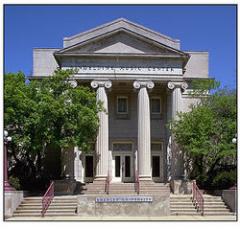
Peoria is served by four public K-12 school districts:
The Roman Catholic Diocese of Peoria runs six schools in the city: five grade schools and Peoria Notre Dame High School. Non-denominational Peoria Christian School operates a grade school, middle school, and high school.
In addition, Concordia Lutheran School, Peoria Academy, Christ Lutheran School, and several smaller private schools exist.
Bradley University, Midstate College, Methodist College, OSF St. Francis College of Nursing, the University of Illinois College of Medicine at Peoria, the Downtown and North campuses of Illinois Central College, and the Peoria campus of Robert Morris University are based in the city. Additionally, Eureka College and the main campus of Illinois Central College are located nearby in Eureka and East Peoria, respectively.
The health-care industry accounts for at least 25% of Peoria's economy. The city has three major hospitals: OSF Saint Francis Medical Center, Methodist Medical Center of Illinois, and Proctor Hospital. In addition, the Children's Hospital of Illinois, the University of Illinois College of Medicine at Peoria, and the Midwest Affiliate of St. Jude Children's Research Hospital are located in the city. The hospitals are all located in a medical district around the junction of Interstate 74 and Knoxville Avenue, adjacent to downtown in the southeast of the city, except for Proctor Hospital in the geographic center of the city. The surrounding towns are also supported by Proctor Hospital, Pekin Hospital, Eureka Hospital, and the Hopedale Medical Complex. The Institute of Physical Medicine and Rehabilitation was created from the "Peoria Plan for Human Rehabilitation," a model for medical and occupational rehabilitation launched in 1943 to integrate returning World War II veterans back into the workplace.
The Peoria area is served by three Interstate highways: Interstate 74, which runs from northwest to southeast through the downtown area, Interstate 474, a southern bypass of I-74 through portions of Peoria and the suburbs of Bartonville and Creve Coeur, and Interstate 155, which runs south from I-74 in Morton to Interstate 55 in Lincoln which connects to Springfield and St. Louis. I-74 crosses over the Illinois River via the Murray Baker Bridge, while I-474 crosses via the Shade-Lohmann Bridge. The nearest metropolitan centers accessible on I-74 are the Quad Cities to the west, and Bloomington-Normal to the east.
From 2004 to 2006, Interstate 74 between Interstate 474 on the west and Illinois Route 8 on the east was reconstructed as part of the Upgrade 74 project.
In addition, U.S. Route 24 runs along the bank of the Peoria side of the Illinois River, becoming a major arterial downtown as part of Adams Street and Jefferson Avenue, and then continuing southwest towards Bartonville as Washington Street, which turns into Adams Street on the south end of Peoria. U.S. Route 150 serves as the main arterial for the northern portion of the Peoria area, becoming War Memorial Drive before heading west towards Kickapoo. Both of these routes enter from the McClugage Bridge; east of the bridge, U.S. 150 runs southeast to Morton, while U.S. 24 runs due east to Washington.
The following state routes run through Peoria:
The planned Illinois Route 336 project will also connect Illinois 336 with I-474 between Illinois 8 and Illinois 116. Construction on the segment nearest Peoria has not started, nor has funding been allocated.
Metro Peoria is served by ten common carrier railroads. Four are Class I railroads: BNSF, Canadian National, Norfolk Southern, and Union Pacific. The last one, Union Pacific, has a north-south oriented line which skirts the west edge of the city but a line branches off of it to enter Peoria. One Class II/Regional, Iowa Interstate, serves the city, coming out of Bureau Junction, Illinois. Five Class III/Shortline railroads: Central Illinois Railroad, which operates a portion of the city-owned Peoria, Peoria Heights and Western Railroad; two Genesee and Wyoming-owned operations: Illinois & Midland Railroad (the former Chicago and Illinois Midland, comes up from Springfield) and Tazewell and Peoria Railroad (leases the Peoria and Pekin Union Railway from its owners Canadian National, Norfolk Southern and Union Pacific; Pioneer Railcorp's Keokuk Junction Railway (which now owns the Toledo, Peoria and Western's West End from Lomax and La Harpe in Western Illinois, plus the branch from Keokuk); and RailAmerica's Toledo, Peoria and Western Railway, which uses BNSF trackage to reach Galesburg and its own line to reach Logansport, Indiana. There is no passenger rail connecting Peoria to other urban centers, although this possibility and the possibility of rail service that connects St. Louis to Chicago (by way of Springfield, Peoria, Bloomington-Normal, and Pontiac) has been and is being investigated.
Peoria's last intercity rail service ended in 1981, when Amtrak withdrew the Prairie Marksman, which stopped in nearby East Peoria.
Public bus service is provided by the Greater Peoria Mass Transit District, which operates 20 bus routes under the name CityLink, that serve the city, Illinois Central College and much of East Peoria, Illinois, Peoria Heights, West Peoria, and points between Peoria and Pekin, Illinois.
The General Wayne Downing Peoria International Airport serves Peoria and surrounding communities. The airport is served by 4 passenger airlines (United, American, Delta, and Allegiant Air) and numerous cargo carriers. Nonstop destinations include Chicago, Dallas/Ft. Worth, Las Vegas, Minneapolis/St. Paul, Detroit, Denver, Phoenix, Orlando, and Tampa. Cargo carriers serving Peoria include FedEx, UPS and Airborne Express (now DHL).
Mount Hawley Airport, on the north end of the city, also accepts general aviation. Numerous other general aviation airports are located in the tri-county region.
Pekin Municipal Airport, in Pekin, Illinois, across the river, also serves the area.
The theme of Peoria as the archetypical example of middle American culture runs throughout American culture, appearing in movies and books, on television and radio, and in countless advertisements as either a filler place name, the representative of mainstream taste.
Peoria is usually used in a complimentary aeand positive aefashion in advertising; in contrast, most fictional allusions are an obvious affront and literary usage often implies that "Peoria" is indeed equivalent to "provincial."
Word Count: 4692






